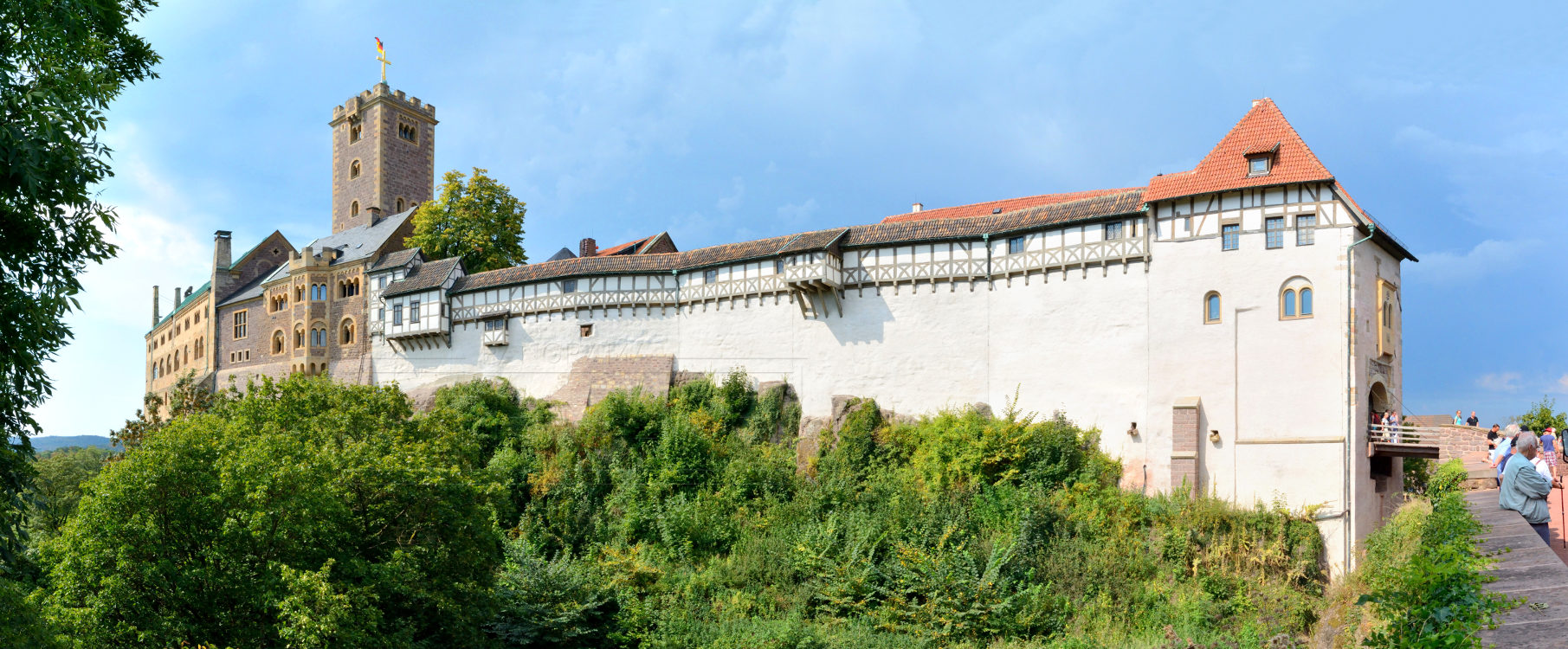The Wartburg Castle near Eisenach sits on a 400-meter-high rock above the Thuringian Forest. Once the seat of the Landgrave of Thuringia, it was the first castle to be included in the UNESCO World Heritage List.
Since its foundation in 1067, the castle has been the scene of many important historical highlights of German history. As the centre of high medieval poetry and minnesong, the songs of Walther von der Vogelheide and the poems of Wolfram von Eschenbach were performed here. Richard Wagner’s opera “Tannhäuser” made its legendary singer’s war famous. The Wartburg Castle also went down in history as the residence of Saint Elisabeth in the 13th century and as the exile of Martin Luther. Until today you can visit the authentic Luther Room, where the translation of the Bible was initiated in the 16th century.
In the 19th century, the medieval castle was carefully rebuilt, renovated and decorated in accordance with the art concept of that time. Not only was the medieval building fabric restored, but also new buildings such as the representative “Palas” ballroom were added.
On the panorama you can see on the right the entrance to the castle. Over the drawbridge one reaches the gatehouse as entrance to the Wartburg castle. The narrow wall-walk is a connection to the “Palas” at the back, which is until today the venue for Wartburg concerts. Also the keep rises up between the castle walls.
Today, a wide collection of art treasures can be seen in the Wartburg Museum. These include tapestries and sculptures by Tilmann Riemschneider as well as works by Cranach the Elder and historical furniture from the Renaissance and Historicism. The collection and as an important place of German history, Wartburg Castle is still a popular destination for pilgrims and tourists.


